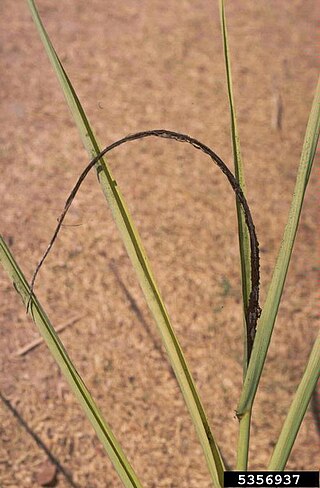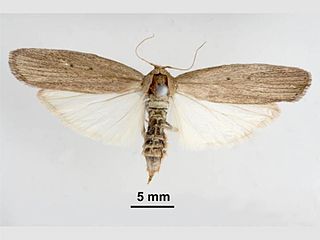
Mother of vinegar is a biofilm composed of a form of cellulose, yeast, and bacteria that sometimes develops on fermenting alcoholic liquids during the process that turns alcohol into acetic acid with the help of oxygen from the air and acetic acid bacteria (AAB). It is similar to the symbiotic culture of bacteria and yeast (SCOBY) mostly known from production of kombucha, but develops to a much lesser extent due to lesser availability of yeast, which is often no longer present in wine/cider at this stage, and a different population of bacteria. Mother of vinegar is often added to wine, cider, or other alcoholic liquids to produce vinegar at home, although only the bacteria is required, but historically has also been used in large scale production.

Kombucha is a fermented, lightly effervescent, sweetened black tea drink commonly consumed for its purported health benefits. Sometimes the beverage is called kombucha tea to distinguish it from the culture of bacteria and yeast. Juice, spices, fruit or other flavorings are often added.

Sugarcane smut is a fungal disease of sugarcane caused by the fungus Sporisorium scitamineum. The disease is known as culmicolous, which describes the outgrowth of fungus of the stalk on the cane. It attacks several sugarcane species and has been reported to occur on a few other grass species as well, but not to a critical amount. The most recognizable characteristic of this disease is a black or gray growth that is referred to as a "smut whip". Resistance to sugarcane smut is the best course of action for management, but also the use of disease free seed is important. On smaller scale operations treatments using hot water and removing infected plants can be effective. The main mode of spore dispersal is the wind but the disease also spreads through the use of infected cuttings. Sugarcane smut is a devastating disease in sugarcane growing areas globally.

Leptosphaeria sacchari is a plant pathogenic fungus which causes a disease called ring spot on Saccharum officinarum. This species was originally described in 1890 by Kruger and in 1892 by Van Breda de Haan after it was discovered in the Dominican Republic. L. sacchari is the applied name, whereas Epicoccum sorghinum is the accepted name.
Paraburkholderia sacchari is a species of bacteria in the phylum Pseudomonadota. It was isolated in the 1990s from sugarcane crop soil, and later identified as a new bacterial species, originally named as Burkholderia sacchari. Paraburkholderia sacchari was found to be capable of creating and accumulating polyhydroxyalkanoates (PHA) by incorporating different monomers. This strain was subject of a number of genetic and bioproccess engineering studies conducted worldwide aiming to establish PHA production from different substrates, especially using agro-industrial byproducts.
Bipolaris sacchari is a fungal plant pathogen in the family Pleosporaceae.

Symbiotic culture of bacteria and yeast (SCOBY) is a culinary symbiotic fermentation culture (starter) consisting of lactic acid bacteria (LAB), acetic acid bacteria (AAB), and yeast which arises in the preparation of sour foods and beverages such as kombucha. Beer and wine also undergo fermentation with yeast, but the lactic acid bacteria and acetic acid bacteria components unique to SCOBY are usually viewed as a source of spoilage rather than a desired addition. Both LAB and AAB enter on the surface of barley and malt in beer fermentation and grapes in wine fermentation; LAB lowers the pH of the beer/wine while AAB takes the ethanol produced from the yeast and oxidizes it further into vinegar, resulting in a sour taste and smell. AAB are also responsible for the formation of the cellulose SCOBY.

Sugarcane mosaic virus (SCMV) is a plant pathogenic virus of the family Potyviridae. The virus was first noticed in Puerto Rico in 1916 and spread rapidly throughout the southern United States in the early 1920s. SCMV is of great concern because of the high economic impact it has on sugarcane and maize.

Sugarcane or sugar cane is a species of tall, perennial grass that is used for sugar production. The plants are 2–6 m (6–20 ft) tall with stout, jointed, fibrous stalks that are rich in sucrose, which accumulates in the stalk internodes. Sugarcanes belong to the grass family, Poaceae, an economically important flowering plant family that includes maize, wheat, rice, and sorghum, and many forage crops. It is native to the warm temperate and tropical regions of India, Southeast Asia, and New Guinea. Grown in tropical and subtropical regions, sugarcane is the world's largest crop by production quantity, totaling 1.9 billion tonnes in 2020, with Brazil accounting for 40% of the world total. Sugarcane accounts for 79% of sugar produced globally. About 70% of the sugar produced comes from Saccharum officinarum and its hybrids. All sugarcane species can interbreed, and the major commercial cultivars are complex hybrids.

Sugarcane grassy shoot disease (SCGS), is associated with 'Candidatus Phytoplasma sacchari' which are small, pleomorphic, pathogenic mycoplasma that contributes to yield losses from 5% up to 20% in sugarcane. These losses are higher in the ratoon crop. A higher incidence of SCGS has been recorded in some parts of Southeast Asia and India, resulting in 100% loss in cane yield and sugar production.

Eldana is a genus of moths of the family Pyralidae containing only one species, the African sugar-cane borer, which is commonly found in Equatorial Guinea, Ghana, Mozambique, Sierra Leone and South Africa. Adults have pale brown forewings with two small spots in the centre and light brown hindwings, and they have a wingspan of 35mm. This species is particularly relevant to humans because the larvae are a pest of the Saccharum species as well as several grain crops such as sorghum and maize. Other recorded host plants are cassava, rice and Cyperus species. When attacking these crops, E. saccharina bores into the stems of their host plant, causing severe damage to the crop. This behavior is the origin of the E. saccharrina's common name, the African sugar-cane borer. The African sugar-cane borer is a resilient pest, as it can survive crop burnings. Other methods such as intercropping and parasitic wasps have been employed to prevent further damage to crops.

Bacterial cellulose is an organic compound with the formula (C
6H
10O
5)
n produced by certain types of bacteria. While cellulose is a basic structural material of most plants, it is also produced by bacteria, principally of the genera Acetobacter, Sarcina ventriculi and Agrobacterium. Bacterial, or microbial, cellulose has different properties from plant cellulose and is characterized by high purity, strength, moldability and increased water holding ability. In natural habitats, the majority of bacteria synthesize extracellular polysaccharides, such as cellulose, which form protective envelopes around the cells. While bacterial cellulose is produced in nature, many methods are currently being investigated to enhance cellulose growth from cultures in laboratories as a large-scale process. By controlling synthesis methods, the resulting microbial cellulose can be tailored to have specific desirable properties. For example, attention has been given to the bacteria Komagataeibacter xylinum due to its cellulose's unique mechanical properties and applications to biotechnology, microbiology, and materials science. Historically, bacterial cellulose has been limited to the manufacture of Nata de coco, a South-East Asian food product. With advances in the ability to synthesize and characterize bacterial cellulose, the material is being used for a wide variety of commercial applications including textiles, cosmetics, and food products, as well as medical applications. Many patents have been issued in microbial cellulose applications and several active areas of research are attempting to better characterize microbial cellulose and utilize it in new areas.
Duganella radicis is a bacterium from the genus Duganella in the Oxalobacteraceae family which was isolated with Duganella sacchari from the rhizosphere of field-grown sugarcane.
Duganella sacchari is a bacterium of the genus Duganella in the Oxalobacteraceae family which was isolated with Duganella radicis from the rhizosphere of field-grown sugarcane.
Saccharopolyspora spinosa is a species of actinobacterium first isolated from soil in a rum still in an abandoned sugar mill on the Virgin Islands. It was discovered and described by researchers Mertz and Yao while collecting specimens to be screened for novel antibiotics. It develops aerial, pale, yellowish pink hyphae and bears long chains of spores encased in spiny spore sheaths. It can also reproduce by fragmentation in an aqueous environment. Its type strain is A83543.1.
Gluconacetobacter is a genus in the phylum Pseudomonadota (Bacteria). In 2012, several species previously classified in the genus Gluconacetobacter were reclassified under the new genus Komagataeibacter, including the cellulose producing species Komagataeibacter xylinus.
Gluconacetobacter johannae is a species of acetic acid bacteria first isolated from rhizospheres and rhizoplanes of coffee plants. Its type strain is CFN-Cf55T.
Gluconacetobacter azotocaptans is a species of acetic acid bacteria first isolated from rhizospheres and rhizoplanes of coffee plants. Its type strain is CFN-Ca54T.
Gluconacetobacter diazotrophicus is a bacterium with a rod-like shape, has rounded ends and belongs to Gram-negative bacteria. The bacterium is known for stimulating plant growth and being tolerant to acetic acid. With one to three lateral flagella, and known to be found on sugarcane, Gluconacetobacter diazotrophicus was discovered in Brazil by Vladimir A. Cavalcante and Johanna Dobereiner.
Komagataeibacter xylinus is a species of bacteria best known for its ability to produce cellulose, specifically bacterial cellulose.









